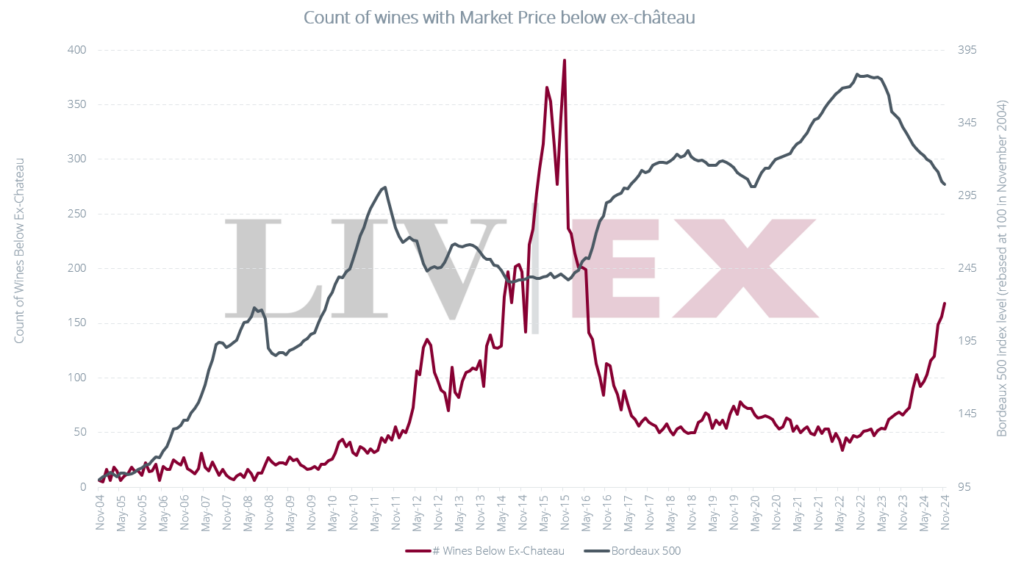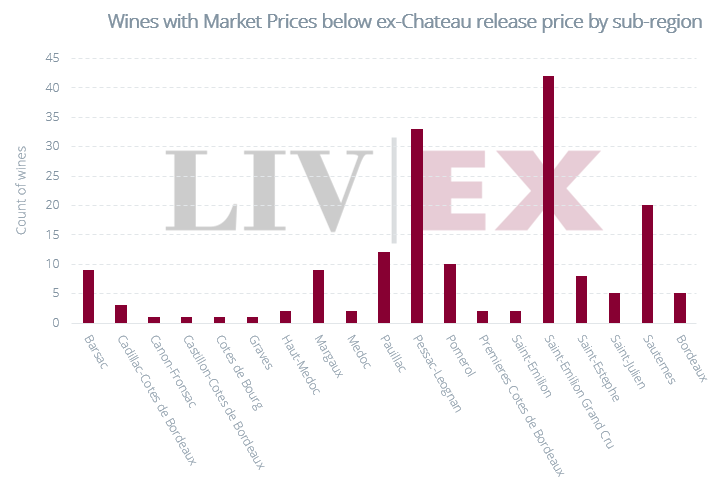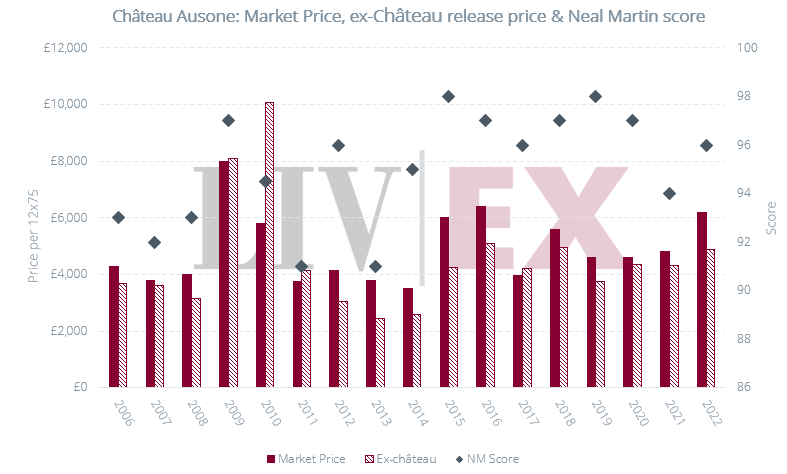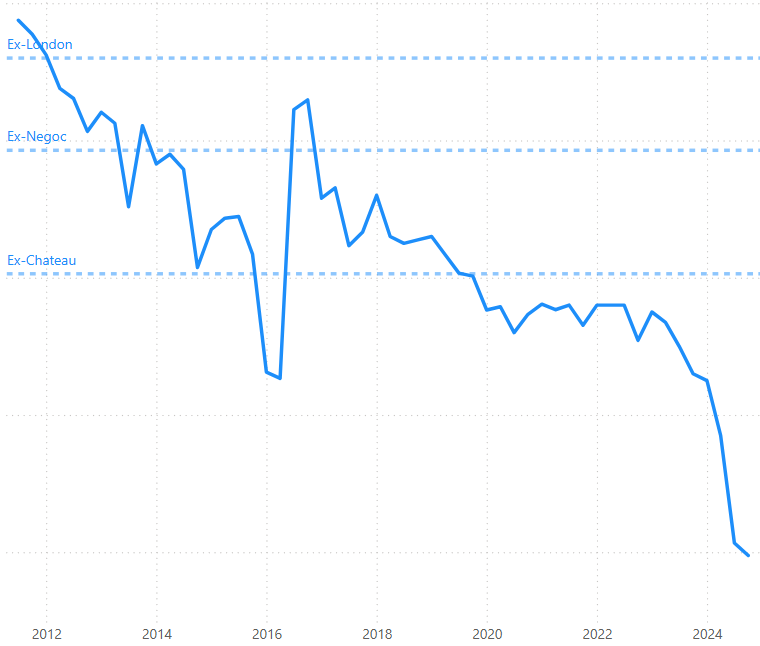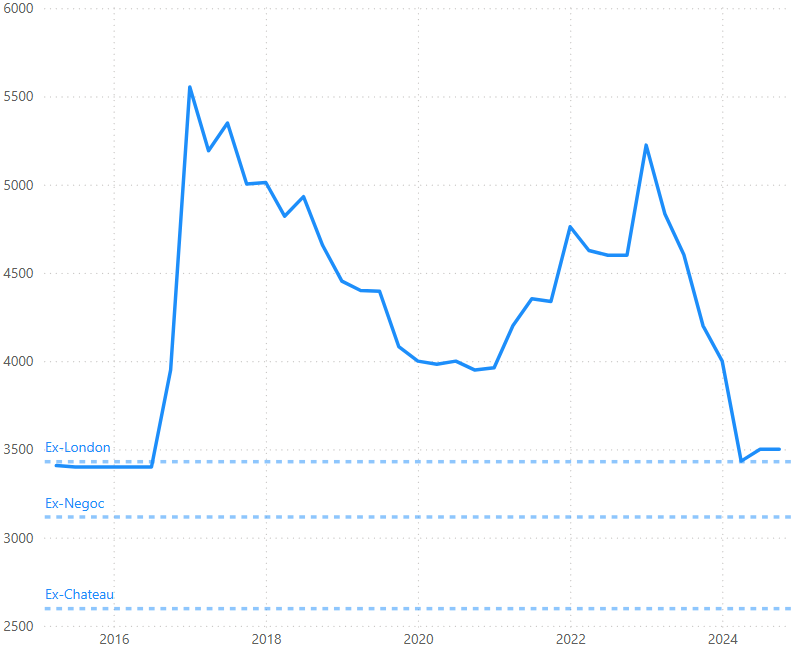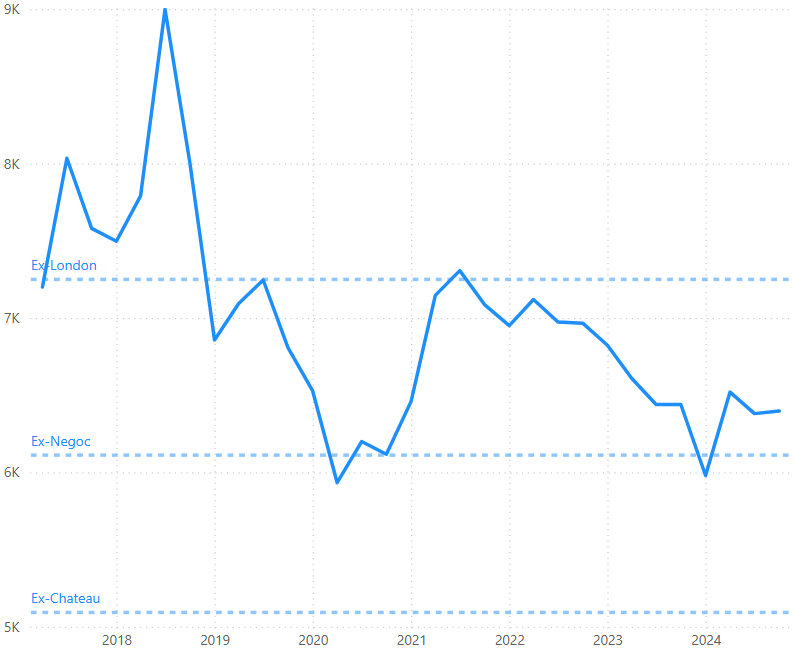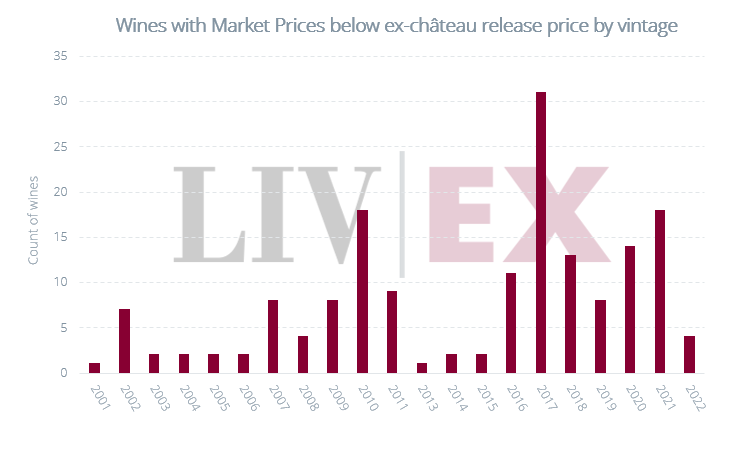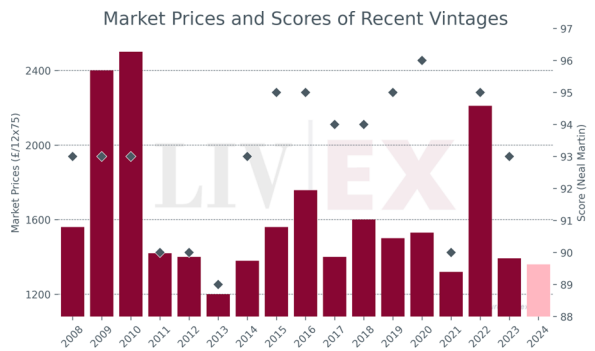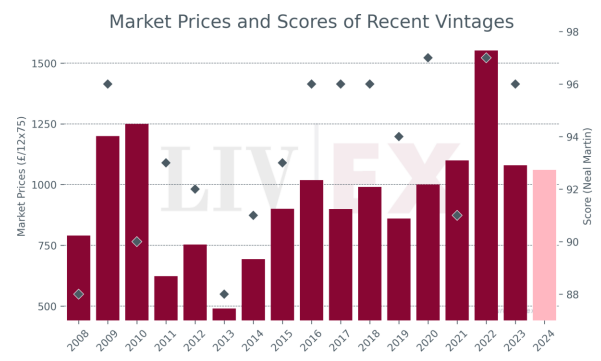What’s happening in the market?
Domaine de la Romanée-Conti is the top-traded producer by value so far this week. Alongside several vintages of Romanée-Conti, a 2011 assortment case and Corton, Prince Florent de Merode 2020 have changed hands.
Perhaps thanks to the approach of Christmas and New Year’s Eve, Champagne has had a strong week so far, accounting for 19.0% of traded value. Krug and Dom Perignon are tied as the top-traded producers, each taking 30% of the region’s trade.
Today’s deep dive: which wines are on the market below their ex-château release prices?
In the Liv-ex November Market Report (summary available here), we discussed how the collapse of Market Prices below ex-château release prices may further dent confidence in Bordeaux’s En Primeur system. If négociants can buy wine cheaper on the secondary market once the wines are physical than they are able to ex-château, they might question the need to preserve their allocations. Currently, the Market Prices of 168 Bordeaux wines sit below their ex-château release prices. Today, we assess how this number has changed over time and break down its composition by vintage and sub-region.
While 168 is not insignificant, the spike in the number of wines below the ex-château threshold was even more dramatic back in 2015. Likely, this marked the point at which merchants finally lowered prices of the 2009s and 2010s to meet demand.
Which wines have fallen below ex-château by sub-region?
42 Saint-Emilion Grand Crus have Market Prices lower than their ex-château release prices. While a number of these wines are one-off vintages of less expensive wines from smaller producers, this figure also includes six vintages of Château Quintus, four each of Château Ausone and Bellevue Mondotte, three of Château Valandraud and two each of Château Cheval Blanc and La Mondotte.
As shown in the chart above, the 2009 and 2010 vintages of Ausone have market prices below their ex-château release prices (by 1% and 42%). Still, they are two of the more expensive vintages available on the market. Rated 97 and 94+ points by Neal Martin (Vinous), they were released at 800 € and 950 € per bottle ex-château. By comparison, the 97-point 2016 was released at 450 € per bottle, and the 95-point 2014 at 300 € – less than a third of the price of the 2010 despite receiving similar scores. While the 2010 vintage has dipped well below its ex-château release price, the 2016 has found support at its ex-négociant release price and the 2014 at its ex-London release price.
2010
2014
2016
Château Ausone is not alone. Breaking down the total figure of wines below ex-château, we can see that the 2010s have been the second most likely vintage to fall below this threshold. Rather than speaking to the quality or longevity of the vintage – it was unanimously declared a ‘great’ — it speaks to poor release pricing, and the lack of sentimentality of the market when seeking true value (the price at which buyers are prepared to step up).
Wines below ex-château by vintage
The inefficacy of the En Primeur system in recent years is clear in the chart above – 59% of the wines below ex-château threshold are from vintages 2016 onwards. 32 (19%) of wines below the threshold hail from the 2017 vintage. The 2017’s Market Share is slightly down on expected levels at this stage after release. From June through October this year, the 2017s accounted for just 6% of the volume of Bordeaux traded. Last year, the 2016’s accounted for 8% of trade over the same period. Though prices have fallen below ex-château, this has not been enough to inspire demand.
Liv-ex analysis is drawn from the world’s most comprehensive database of fine wine prices. The data reflects the real-time activity of Liv-ex’s 620+ merchant members from across the globe. Together they represent the largest pool of liquidity in the world – currently £100m of bids and offers across 20,000 wines.


